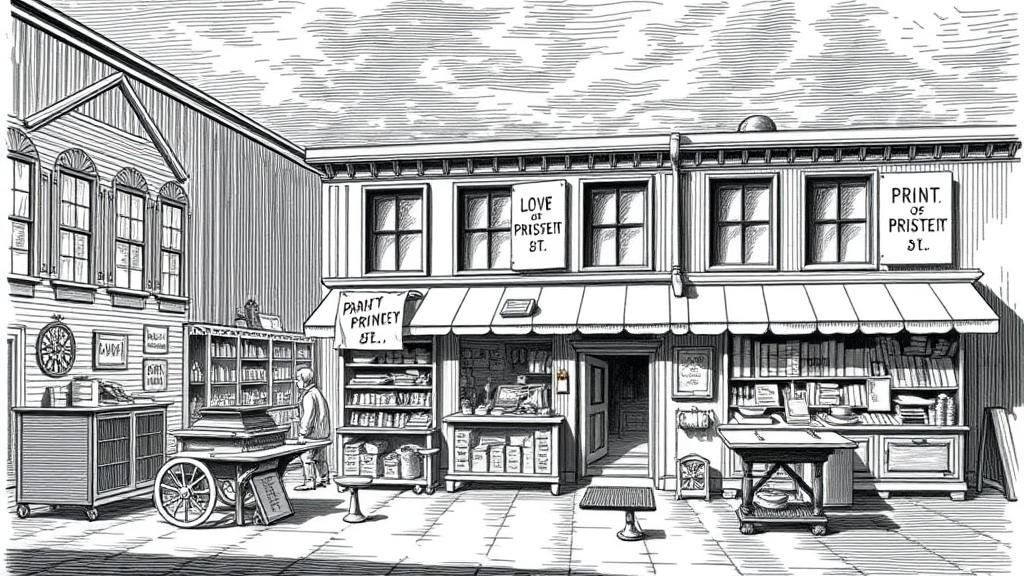Tracing Early Printing Shops for Publishing Artifact Hotspots
Tracing Early Printing Shops for Publishing Artifact Hotspots
The invention of the printing press in the 15th century marked a monumental shift in the dissemination of information and culture. This article seeks to trace the early printing shops that emerged during this period, examining their significance as hotspots for publishing artifacts. By analyzing specific historical locations, printing technologies, and the socio-cultural contexts in which these shops operated, we can gain insight into their lasting impact on literature, education, and society.
The Emergence of Printing Shops
Early printing shops, often referred to as print houses, began to surface following Johannes Gutenbergs groundbreaking invention around 1440. e establishments not only revolutionized the production of books but also catalyzed the spread of ideas across Europe. The first known printing shop was established in Mainz, Germany, where Gutenberg produced the famous Gutenberg Bible in 1455. This monumental work signified the potential of printing technology to transform knowledge dissemination.
Geographical Hotspots of Early Printing
Several cities across Europe became pivotal centers for early printing activities. Key locations include:
- Mainz, Germany: As the birthplace of the printing press, Mainz was home to numerous early printers, including Johann Fust and Peter Schöffer, who contributed to advancements in print quality and typographic design.
- Venice, Italy: By the late 15th century, Venice emerged as a leading hub for printing, renowned for publishers like Aldus Manutius, who popularized the use of italic type and set the standard for book design.
- Paris, France: In the early 16th century, Paris became a critical center for humanist scholars, with printing shops like those of Robert Estienne promoting the spread of classical texts.
Technological Developments and Their Impact
The evolution of printing technology played a critical role in the proliferation of printing shops. Key developments included:
- Movable Type: Gutenbergs invention of movable type allowed for rapid and repeatable printing processes, contributing to the increased availability of books.
- Woodblock Printing: Though existing prior to movable type, woodblock printing influenced early practices in printing shops, particularly in East Asia, where it had been used for centuries.
According to historian Elizabeth L. Eisenstein, the transition to printing was integral in what she terms the Printing Revolution, which not only altered how information was disseminated but also how people engaged with knowledge itself.
Publishing Artifacts and Their Significance
Publishing artifacts from early printing shops serve as crucial historical documents that provide insights into the cultural and intellectual currents of their times. Noteworthy artifacts include:
- The Gutenberg Bible: This was the first major book printed using movable type in the West and is regarded as a cornerstone of the transition from manuscript culture to print culture.
- Aldine Press Editions: Works published by the Aldine Press are notable for their typographic elegance and innovation, reflecting the Renaissances emphasis on humanism.
The proliferation of such artifacts suggests that these early printing shops were not just places of production but cultural institutions that influenced educational practices and literacy rates across Europe. The spread of printed material facilitated the rise of public libraries, universities, and literacy movements in the following centuries.
Real-World Applications and Contemporary Significance
Understanding the history of early printing shops carries relevance in today’s digital age. The transformational impact of early printing is paralleled in the contemporary evolution of digital publishing. As technologies continue to shift, the foundational lessons learned from early printing practices inform modern publishing strategies and the democratization of information through platforms like eBooks and online journals.
Conclusion
The tracing of early printing shops reveals their critical role as hotspots for publishing artifacts, shaping cultural and intellectual landscapes in Europe from the 15th century onward. By examining these historical establishments, we gain valuable insights into the evolution of publishing and its ongoing significance in contemporary society. Future research could focus on lesser-known printing centers and their unique contributions to the global narrative of printed knowledge.
Actionable Takeaways
For researchers and enthusiasts interested in the legacy of early printing:
- Consider exploring local archives or libraries that may house ancient texts or records from early printing workshops.
- Engage with digital databases that archive early printed materials, which can provide access to significant historical documents for study.
- Participate in workshops or courses focusing on the history of printing to deepen understanding of its impact on modern publishing.



